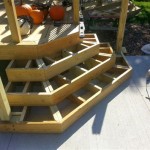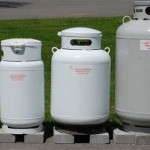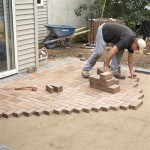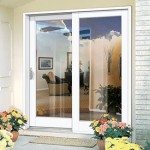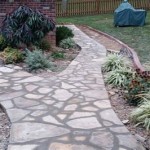DIY Patio Furniture Cushions: A Comprehensive Guide
Creating comfortable and aesthetically pleasing outdoor spaces often involves investing in patio furniture. However, the cost of professionally made cushions can be significant. Constructing cushions independently presents a cost-effective and customizable alternative. This article outlines the process of crafting patio furniture cushions, detailing material selection, construction techniques, and maintenance considerations.
Selecting Appropriate Materials
The longevity and comfort of DIY patio furniture cushions hinge on choosing the right materials. This encompasses fabric, filling, thread, and any supplemental components such as zippers or ties.
Fabric Selection: Outdoor fabric differs significantly from indoor fabric due to its exposure to the elements. Key characteristics to consider include:
Water Resistance: Opt for fabrics treated with water-resistant finishes or those inherently hydrophobic. Acrylic fabrics, such as Sunbrella, are popular choices due to their excellent water repellency and resistance to fading. Polyester fabrics formulated for outdoor use also offer good water resistance at a lower cost.
UV Resistance: Prolonged exposure to sunlight can cause fabric to fade and degrade. Select fabrics with high UV resistance to maintain their color and structural integrity. Solution-dyed acrylic fabrics are known for their superior UV resistance, as the color is integrated into the fiber itself rather than applied as a surface treatment.
Mold and Mildew Resistance: Outdoor environments are conducive to mold and mildew growth. Choose fabrics treated with antimicrobial finishes or inherently resistant to these microorganisms. Olefin fabric, for example, is naturally resistant to mold and mildew.
Durability: The fabric should be able to withstand abrasion and wear and tear from regular use. Consider the fabric's weight and weave density. Denser weaves offer greater durability.
Filling Selection: The filling determines the cushion's comfort and support. Common options include:
Polyurethane Foam: Polyurethane foam is a versatile and relatively inexpensive option. It comes in various densities, affecting its firmness and durability. High-density foam offers better support and a longer lifespan. However, standard polyurethane foam can retain water, making it prone to mold and mildew growth in outdoor environments. Open-cell foam, designed to allow water to drain, is a more suitable choice for outdoor cushions.
Polyester Fiberfill: Polyester fiberfill is a lightweight and affordable option. It’s often used for back cushions or throw pillows. While water-resistant, it tends to flatten over time, reducing its support and loft. It's generally less durable than foam but is easier to clean.
Dryfast Foam: Dryfast foam, also known as reticulated foam, is specifically designed for outdoor use. It has large open pores that allow water to drain quickly, preventing mold and mildew growth. Dryfast foam is more expensive than standard polyurethane foam but offers superior performance and longevity in outdoor applications.
Thread Selection: The thread used to sew the cushions should be durable and resistant to the elements. Opt for:
Polyester Thread: Polyester thread is strong, UV resistant, and resistant to rot and mildew. It's an excellent choice for outdoor cushions.
Nylon Thread: Nylon thread is also strong and durable, but it's more susceptible to UV degradation than polyester thread. Therefore, it might not be the best option for cushions exposed to intense sunlight.
Supplemental Components: Consider zippers, ties, and other accessories that will enhance the cushion's functionality and appearance.
Zippers: Zippers allow for easy removal of the cushion cover for cleaning. Choose heavy-duty zippers made from corrosion-resistant materials, such as nylon or plastic.
Ties: Ties can secure the cushions to the furniture frame, preventing them from slipping. Use fabric that matches or complements the cushion cover and ensure the ties are securely attached.
Constructing the Cushions
The construction process involves measuring, cutting, sewing, and filling the cushions. Accuracy in measurements and attention to detail in sewing are crucial for achieving a professional-looking result.
Measuring and Cutting:
Measure the Furniture: Accurately measure the dimensions of the furniture seat or back where the cushion will be placed. Add extra width and length (typically 1/2 to 1 inch) to account for seam allowances and filling.
Create a Pattern: A pattern ensures consistent sizing and shape. Use paper or fabric to create a template based on the measurements. For cushions with complex shapes, such as rounded corners or curves, a pattern is essential.
Cut the Fabric: Lay the fabric flat and trace the pattern onto it using a fabric marker or chalk. Carefully cut the fabric along the marked lines, using sharp scissors or a rotary cutter. Cut two pieces of fabric for each cushion – one for the top and one for the bottom.
Cut the Filling: Use the same pattern to cut the foam or fiberfill. If using foam, an electric carving knife or a sharp utility knife works well. For fiberfill, you can simply tear it apart and form it into the desired shape.
Sewing the Cushion Cover:
Prepare the Fabric: If using a zipper, install it on one edge of the fabric pieces. If using ties, sew them onto the designated locations on the fabric before assembling the cover.
Sew the Seams: With the right sides of the fabric facing each other, pin the edges together. Use a sewing machine to sew along the pinned edges, leaving a seam allowance of approximately 1/2 inch. Leave an opening on one side large enough to insert the filling.
Trim and Clip: Trim the seam allowances to reduce bulk. Clip the corners and curves of the seams to allow the fabric to lie flat and smooth. This is especially important for cushions with rounded corners.
Turn and Press: Turn the cushion cover right side out. Use a point turner or a knitting needle to push out the corners and curves. Press the seams with an iron to create a crisp, professional finish.
Filling the Cushion:
Insert the Filling: Carefully insert the foam or fiberfill into the cushion cover through the opening. Ensure the filling is evenly distributed throughout the cushion, avoiding lumps or gaps.
Close the Opening: Hand-stitch the opening closed using a hidden stitch, or use a sewing machine to stitch it closed if preferred. A hidden stitch creates an invisible closure.
Maintaining and Cleaning the Cushions
Proper maintenance and cleaning extend the life of DIY patio furniture cushions and keep them looking their best. Regular cleaning, prompt stain removal, and proper storage are key.
Regular Cleaning:
Brush Off Debris: Regularly brush off dirt, leaves, and other debris from the cushion surfaces. A soft-bristled brush or a vacuum cleaner with a brush attachment works well.
Spot Clean: Address spills and stains immediately. Blot the stain with a clean cloth or sponge, working from the outside in. Avoid rubbing, as this can spread the stain.
Wash Removable Covers: If the cushion covers are removable, wash them according to the manufacturer's instructions. Generally, gentle cycle washing with mild detergent is recommended. Avoid using bleach, as it can damage the fabric.
Stain Removal:
Mild Soap and Water: For most stains, mild soap and water are effective. Mix a small amount of dish soap with warm water and apply it to the stain. Blot the stain and rinse with clean water.
Vinegar Solution: For stubborn stains, try a solution of equal parts white vinegar and water. Apply the solution to the stain, let it sit for a few minutes, and then blot it away.
Specialized Fabric Cleaners: For tough stains or when cleaning specific types of fabric, consider using specialized fabric cleaners formulated for outdoor use. Follow the manufacturer's instructions carefully.
Storage:
Cover the Cushions: When not in use, cover the cushions with waterproof covers to protect them from rain, sun, and dirt. This is particularly important during periods of inclement weather or when the furniture is not in use for extended periods.
Store Indoors: Ideally, store the cushions indoors during the off-season or when heavy rain is expected. This will prevent them from becoming waterlogged and prolong their lifespan. A garage, shed, or even a large storage bin are suitable options.
Air Dry Thoroughly: Before storing cushions, ensure they are completely dry. Damp cushions are prone to mold and mildew growth. Air dry the cushions in a well-ventilated area.
By meticulously selecting materials, employing careful construction techniques, and adhering to a regular maintenance schedule, individuals can create durable, comfortable, and aesthetically pleasing patio furniture cushions that enhance their outdoor living spaces while remaining a cost-effective alternative to purchasing commercially manufactured cushions. This detailed approach allows for customization in design and provides assurance of quality craftsmanship.

Diy Outdoor Cushions A Erfly House

How To Re Cover Outdoor Cushions A Quick Easy Diy Oh Yay Studio Color Painting Making Everyday Celebrating

Diy Outdoor Cushions A Erfly House

How To Build A Diy Outdoor Sofa With Cushions Thediyplan

Sew Easy Outdoor Cushion Covers Confessions Of A Serial Do It Yourselfer

How To Re Cover Outdoor Cushions A Quick Easy Diy Oh Yay Studio Color Painting Making Everyday Celebrating

Thrifty And Chic Diy Projects Home Decor

Diy Outdoor Cushions A Erfly House

Easy Diy Outdoor Cushion Covers Patio Furniture Cushions

21 Diy Outdoor Furniture Ideas For Your Backyard Extra Space Storage
Related Posts

